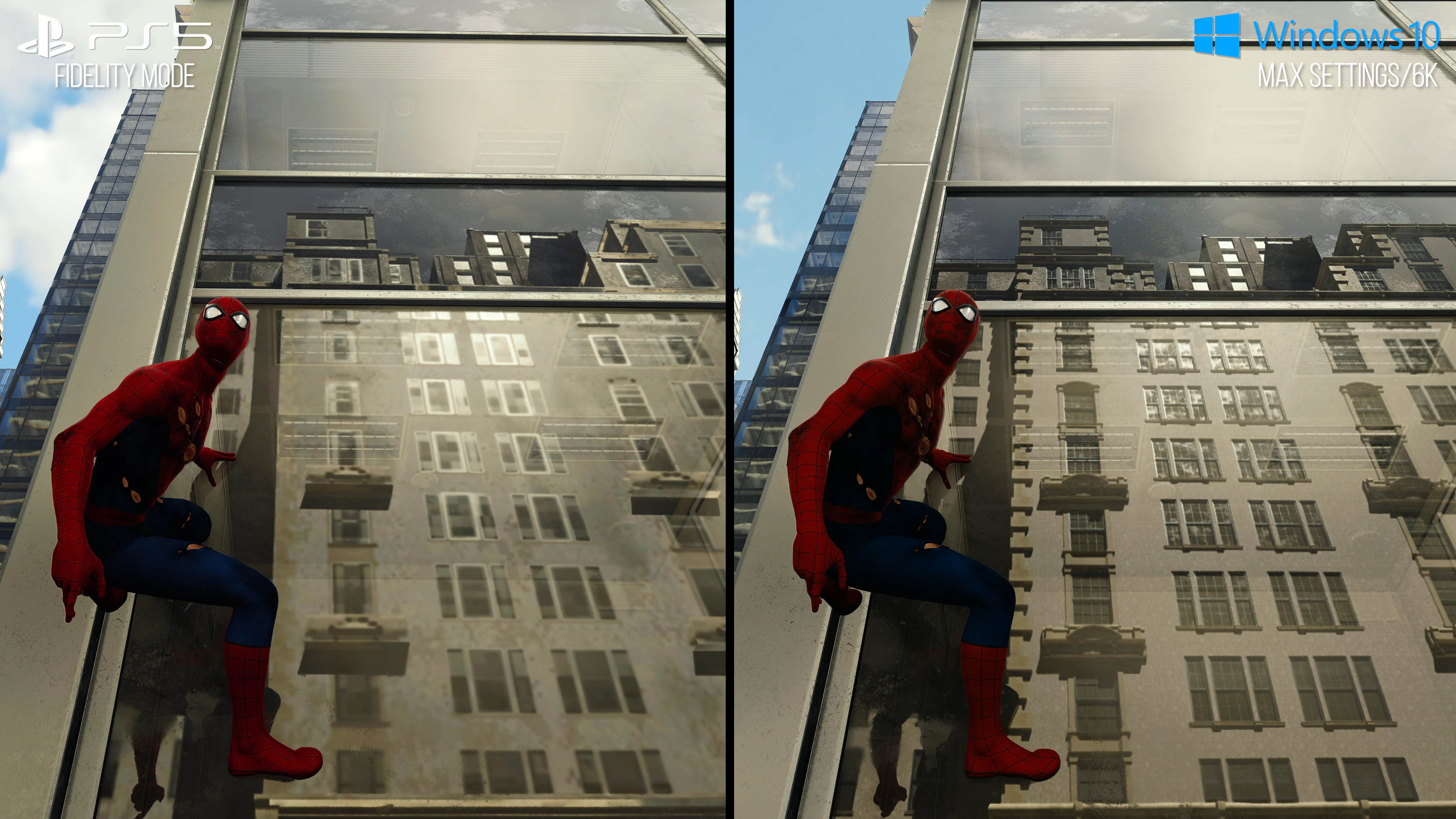[ad_1]
The embargo for the highly anticipated Marvel’s Spider-Man Remastered lifted today and you may be wondering where the Digital Foundry coverage is – we received the game a while back along with most other outlets. Well, the truth is that developer Nixxes is still hard at work with the game, patches are still incoming (the latest arriving a few hours ago) and we’re intent on delivering coverage that accurately reflects the state of the game you’ll be playing on day oneas best as we can manage. Right now, the port is looking exceptionally impressive in many regards but to briefly sum up, it plays brilliant on higher-end PCs, it also works very nicely on Steam Deck, but we’ve experienced some problems with low to mid-range GPUs. In fact, the very latest update to the game seeks to address those very issues – with some success.
Taking a more global look at the conversion though, there’s much to commend Nixxes’ efforts. The game supports all aspects ratios we could test, from the 16:9 of most modern screens to the 21:9 and 32:9 ultra-wide variants, the 16:10 of Steam Deck and even 4:3 for those interested in an old-school CRT experience. On top of this, there’s adjustable field of view support too.
Per other Nixxes titles, there’s also fullscreen and exclusive fullscreen support – and it is properly implemented with resolutions and refresh rates independent of what the desktop is configured to. It sounds mundane, but these things matter. Of course, unlocked frame-rates are supported, but for those with less capable PCs, the half refresh rate v-sync mode actually works properly with consistent frame-pacing (not on Steam Deck though – use the system level option for that) while dynamic resolution scaling is also implemented, with a configurable frame-rate target. Targeting a locked, consistent 30fps or 60fps experience is made that much easier.

The DRS system works in concert with any given upscaler, be it FSR 2.0, DLSS or even IGTI – Insomniac’s own, rather splendid temporal injection technique that looks so good on PS4 Pro and PlayStation 5. Of course, those upscalers can also be adjusted to work fixed resolutions too. We’ll be taking a look at how all of these options stack up in due course, but the level of configurability here is excellent overall. Another small but significant point: Marvel’s Spider-Man Remastered loaded exceptionally quickly on PlayStation 5 – but it’s also no slouch on PC, with Nixxes also retaining the console game’s ability to easily skip past introductory sequences.
To see this content please enable targeting cookies.
The settings menu is robust, with scalability beyond PlayStation 5 varying according to the specific visual feature. Anisotropic filtering on PS5 is similar to PC’s 4x setting, meaning that the additional 8x and 16x options are welcome, while the ability to use DLSS and DLAA offers improved image quality over the console release. On top of this, there’s less pop-in near the camera while LOD settings also offer some marginal improvements over the PlayStation experience. Meanwhile, shadows maps are of a higher resolution, though the difference against console is fairly minimal. Ray tracing gets a significant boost: full resolution vs half-res if you want it, higher quality reflections generally, along with more objects in those reflections both close-up and at a distance.
We briefly mentioned performance issues in the intro and it’s worth explaining that. For a 1080p60 experience, Nixxes recommends a GTX 1060 6GB or a Radeon RX 580 8GB. Using optimised settings (we’re still working on finalising those, but it’s very close to the standard high preset), both should indeed be able to hit 60fps and to sustain it across the run of play, especially if you use the dynamic resolution scaling option. However, if the view on-screen suddenly shifts to a high detail area – for example, swinging up to a city vista view – this can cause stutter and a drop to performance. Running with frame-rate unlocked can also cause stutter in fast traversal: thankfully, today’s update significantly improves consistency here – but it still needs work.

Nixxes tells us that the Insomniac engine heavily utilises occlusion to reduce draw calls, which improves performance. However, when the camera is moving, the renderer lacks occlusion information for details that are suddenly in view, causing a spike in draw calls and a subsequent stuttering effect. Curiously, this situation tends to improve the better your GPU, but right now, limiting performance and not running flat out during city traversal makes the ride smoother overall.
Steam Deck? Using tweaks to the high preset – crucially, medium hair quality and low depth of field – you can essentially run the game at 720p/800p at a fairly consistent 30 frames per second, using dynamic resolution scaling to help mitigate areas where the hardware is GPU-limited. Again, introducing a frame-rate cap (specifically, the Deck’s system level 30fps limiter) is crucial for a consistent experience – running unlocked sees both CPU and GPU competing for limited resources, resulting in a stop-start stuttering experience. Even so, it’s not plain sailing all the way – there’s the odd drop to performance, often accompanied by audio cut-out – while some areas, such as Aunt May’s FEAST building interior really test the Deck’s GPU, even with dynamic resolution scaling enabled.

I’ve also experienced system lock-ups and crashes, though thankfully they’re few and far between. Again, recent patches deployed this week have helped a great deal and fixed a lot of performance bottlenecks – adjustable hair quality arrived at the beginning of the week and before that, cutscenes could hit 15fps. Now, by dropping hair quality from high to medium, we’re at 30fps in most scenes with heavy character work. Of course, this is a demanding game, so expect limited battery life – an average 20-23W consumption puts ‘lastability’ on the Deck at under two hours. Still, to see a game of this visual quality play out on a mobile device is highly impressive.
So, with the review still in progress, where do we stand right now? We’ve spent over a week with the game and right from the first moment Marvel’s Spider-Man arrived, we’ve had few issues playing it on our high-spec PCs: improved resolution, clarity, great performance – it’s been fantastic to return to the game. Similarly, after a patch or two, the Steam Deck experience has also been impressive and that’s where I’ve sunk in most of my play-time. With all of this in mind, the issues we’ve had with cards like GTX 1060 and RX 580 during high-speed traversal around the city have been concerning – but as of today, the improvement has been palpable and I’d hope to see further optimisations in due course. To its credit, Nixxes has been very open to feedback during the entire review period, to the point of adding extra options to the RT settings menu we really wanted to see to really push high-end hardware to the limit. However, with these and other settings literally added to the line-up as of today, I hope you’ll forgive us for not being able to deliver the in-depth DF tech report on this game – but we aim to complete it as soon as possible.
[ad_2]




